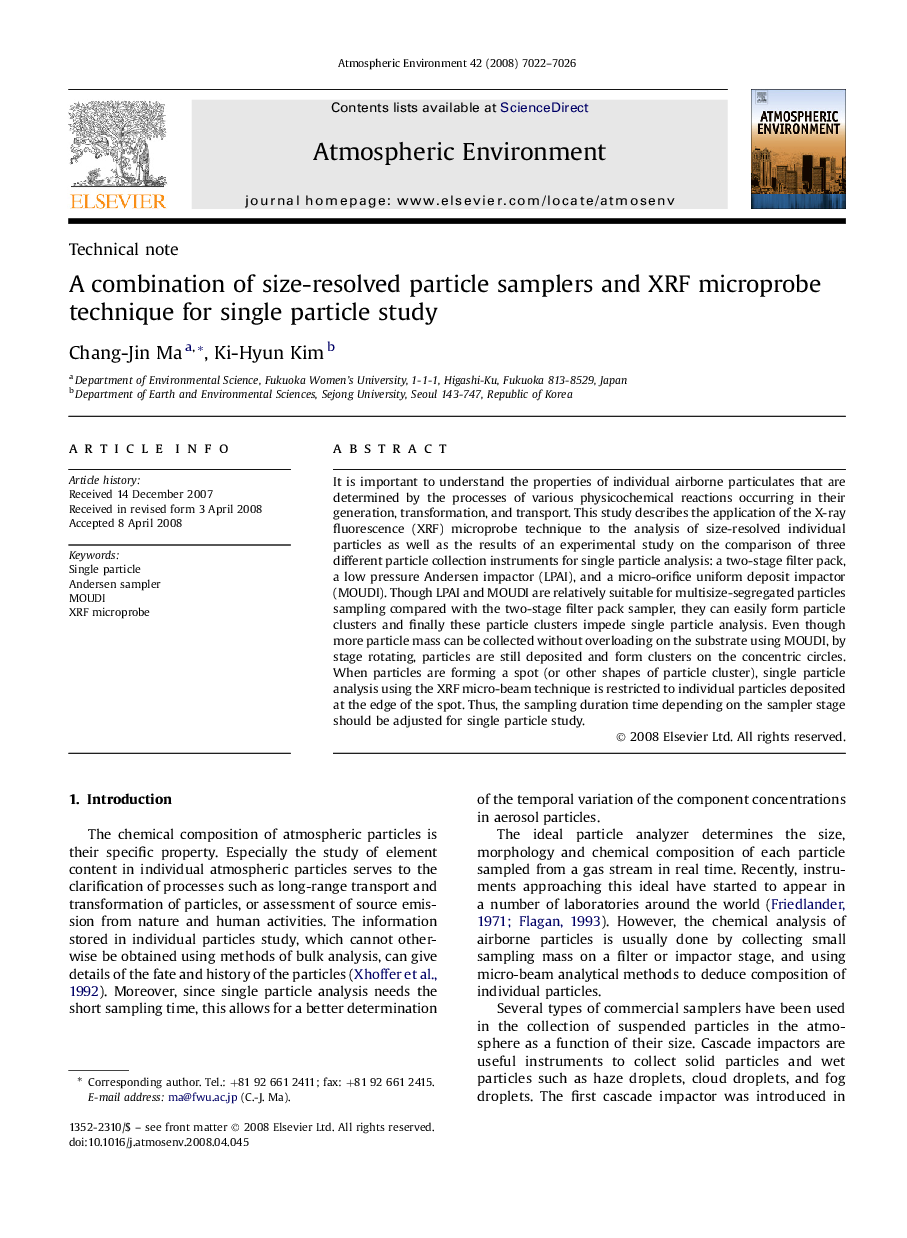| Article ID | Journal | Published Year | Pages | File Type |
|---|---|---|---|---|
| 4442387 | Atmospheric Environment | 2008 | 5 Pages |
It is important to understand the properties of individual airborne particulates that are determined by the processes of various physicochemical reactions occurring in their generation, transformation, and transport. This study describes the application of the X-ray fluorescence (XRF) microprobe technique to the analysis of size-resolved individual particles as well as the results of an experimental study on the comparison of three different particle collection instruments for single particle analysis: a two-stage filter pack, a low pressure Andersen impactor (LPAI), and a micro-orifice uniform deposit impactor (MOUDI). Though LPAI and MOUDI are relatively suitable for multisize-segregated particles sampling compared with the two-stage filter pack sampler, they can easily form particle clusters and finally these particle clusters impede single particle analysis. Even though more particle mass can be collected without overloading on the substrate using MOUDI, by stage rotating, particles are still deposited and form clusters on the concentric circles. When particles are forming a spot (or other shapes of particle cluster), single particle analysis using the XRF micro-beam technique is restricted to individual particles deposited at the edge of the spot. Thus, the sampling duration time depending on the sampler stage should be adjusted for single particle study.
